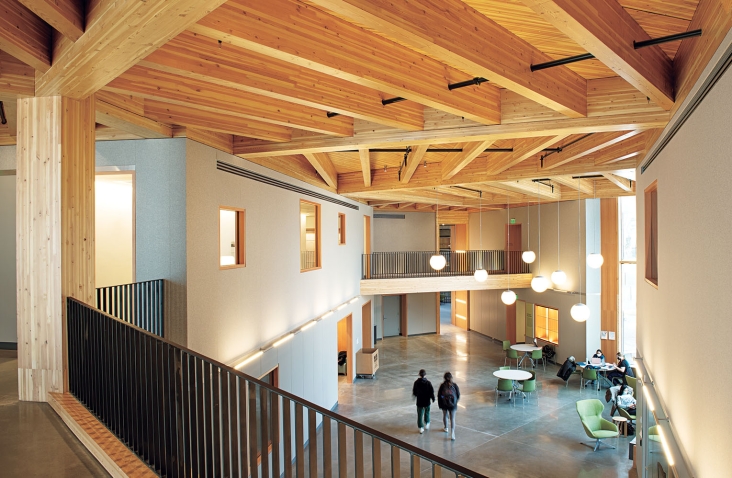The New State of the Art Science Center Opened January 2022
Science Facilities and Resources
In the summer of 2018, Wellesley embarked on an ambitious renovation and construction project for our integrated science center. The completed portion of the project includes construction of an award-winning new greenhouse, called Global Flora, designed to support interdisciplinary study of environmental influences on plant form, and the installation of a new 0.7m telescope and dome. Fall 2019 saw the completion of a major renovation of the laboratory building, known as the L wing. The project converted 19,000 square feet of underutilized library stacks to a vibrant computational and data sciences lab encompassing a wide range of classrooms designed for active learning, research labs for faculty and students in computer science, a physical science studio lab, and student gathering and study spaces of a variety of sizes and layouts. On the upper floors of the building we engaged in a complete infrastructure renovation, providing improved mechanical, electrical and plumbing facilities throughout the teaching and research laboratories, enhancing both access to natural daylight and the quality of the artificial lighting, providing RODI water to all laboratory spaces and replacing many of the ducted fume hoods in teaching labs with modern filtered hoods. We have new climate-controlled rooms and a state of the art vivarium, which enhance our already strong support for research in the life sciences. Our focused on shared instrumentation allows us to make excellent use of our resources for both teaching and research. We have begun the process of demolition and reconstruction of Sage Hall, the oldest part of the science center. In the new building, which we anticipate opening in Fall 2021, we will find new research facilities, including a BSL2 lab facility, space for an Atomic Force Microscope, and a 1400 square foot faculty research lab for our faculty in environmental science. The building also includes a number of new teaching facilities, including a field studies lab, a food science lab, a new neuroscience teaching lab, and a wet lab. Research facilities for faculty and students in psychology and a new Center for the Environment will anchor the new space, which will also contain new classrooms designed for active learning, a large lecture hall, and more than 100 faculty offices.
Science Made Visable: A transformed complex beckons the Wellesley Community to Science Hill

